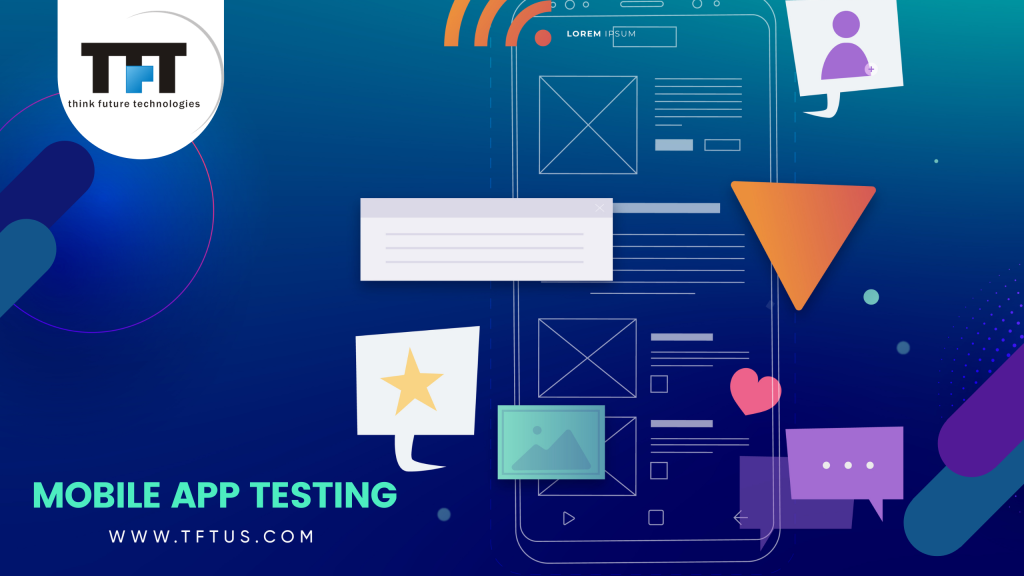The Role of Mobile App Testing in Agile Development: Ensuring Continuous Quality

Introduction
Delivering high-quality apps is critical in the fast-paced world of mobile app development to fulfil the ever-changing needs of customers and remain ahead of the competition. Agile development approaches have grown in favour because of their adaptability and ability to provide software in fewer iterations. However, maintaining consistent quality throughout the mobile app development process is a difficult task. This is where mobile app testing comes into play. In this article, we will look at the importance of mobile app testing in agile development and how it assures the delivery of high-quality apps that fulfil user expectations on a constant basis.
Types of Mobile App Testing in Agile Development
Mobile app testing in agile development includes several methods of testing to accomplish full quality assurance:
1. Functional Testing:
Ensuring that the app meets the specified requirements and functions as intended.
2. Usability Testing:
Evaluating the app's user-friendliness, navigation, and overall user experience.
3. Performance Testing:
Verifying the app's responsiveness, stability, and scalability under different conditions.
4. Compatibility Testing:
Checking the app's compatibility across multiple devices, platforms, and operating systems.
5. Security Testing:
Identifying potential vulnerabilities and ensuring data protection.
6. Regression Testing:
Verifying that new updates or features do not negatively impact existing functionalities.
Agile teams guarantee that the software is extensively validated at each level of development by integrating several testing types, resulting in a high-quality outcome.
Improved User Experience
User experience (UX) may make or break an app's success in the competitive app industry. Mobile app testing is essential for fine-tuning the app's UX. Developers acquire vital insights into how users engage with the app by doing usability testing, A/B testing, and gathering feedback from real users. This data-driven strategy enables agile teams to make educated decisions, resulting in continual improvement in app user experience.
Test-Driven Development (TDD) and Behaviour-Driven Development (BDD)
Test-Driven Development (TDD) and Behavior-Driven Development (BDD) are two critical agile practises that place a high priority on mobile app testing:
1. Test-Driven Development (TDD):
TDD necessitates the creation of test cases prior to the creation of actual code. This validates that the app's functionality corresponds to the requirements. Developers create tests that the app must pass before writing code to satisfy those tests. This repeated procedure results in more robust and trustworthy code.
2. Behavior-Driven Development (BDD):
BDD focuses on describing the app's behaviour in a user-centric language. Developers construct scenarios and acceptance criteria that drive the development process in collaboration with stakeholders. Throughout the process, mobile app testing is used to ensure that the app performs as expected.
Continuous Integration and Continuous Delivery (CI/CD)
Agile development adheres to the principles of Continuous Integration (CI) and Continuous Delivery (CD). CI/CD pipelines allow for automatic testing of each code change, providing developers with quick feedback. When code is submitted to the repository, automated tests are triggered, testing for regressions and verifying that new additions do not interfere with current functions. This seamless integration of mobile app testing into CI/CD pipelines results in faster releases and continual enhancements while keeping high-quality standards.
User Feedback and Iterative Development
Continuous improvement is the foundation of agile development. Mobile app testing is critical in this iterative process since it studies user feedback and app usage statistics. Agile teams gain valuable knowledge about user behaviour, problems, and preferences, which aids in identifying areas for improvement. By prioritising development based on customer feedback, the programme may expand to meet changing user requests, ensuring high user happiness and long-term success.
You may also like to read: the difference between web application and mobile application development
Conclusion
Mobile app testing is a key component of agile development in order to provide high-quality apps that meet user expectations. Agile teams may ensure continuous quality in their mobile app development process by spotting errors early, using a variety of testing techniques, enhancing user experience, integrating TDD and BDD, and employing CI/CD pipelines and user feedback. Agile development methodologies help teams respond fast to market demands, stay competitive, and deliver top-notch mobile experiences to clients. Mobile app testing will continue to be a crucial element for success as the ecosystem for mobile apps develops.
"Want to stay ahead in the competitive app market? Let's strategize and innovate together. Contact us!



Comments
Post a Comment